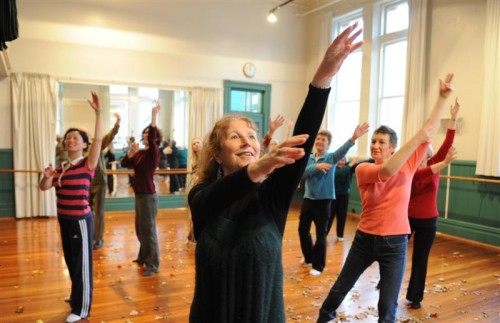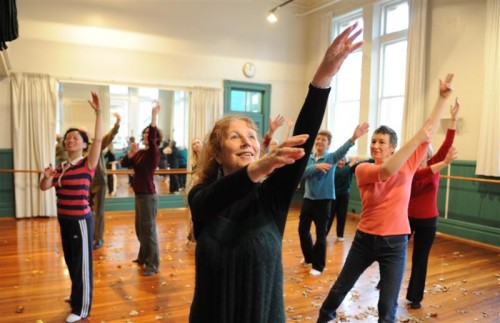
Dance/Movement Therapy and Therapeutic Dance: What’s the Difference?

Photo from http://www.odt.co.nz/on-campus/university-otago/9586/healing-power-dance-aids-growth-spirit-and-soul
There is no doubt that dancing can be an incredibly therapeutic experience. In fact, it was this exact realization that prompted me to probe further into the understanding of what dance/movement therapy was and eventually led me to become a student in the Dance/Movement Therapy & Counseling MA program. However, while dancing can be an extremely therapeutic experience, therapeutic dance alone is not the same as dance/movement therapy. The distinction can sometimes become blurred, because we tend to want to label things that make us feel good as “therapy”. Though the simple act of taking part in therapeutic dance, or any dance class for that matter, may feel like therapy, it is not. This is my understanding, as a first-year DMT & C graduate student, of the difference between these two modalities—therapeutic dance and dance/movement therapy.
Therapeutic dance classes are typically taught by an artist-in-residence although a dance/movement therapist may facilitate therapeutic dance as well. Typically, the instructor will lead the class in movement but not help the clients process the connections between the movement and the feelings evoked by it. In this instance, the process of therapeutic dance is one that is more intuitive to the client. While the client may begin to associate different movement with certain images or emotions, an intervention cannot take place in order to resolve feelings, as is the case in dance/movement therapy. Emotions are processed by the individual on an internal level.
Dance/movement therapy, on the other hand, always employs the facilitation of a registered or board certified dance/movement therapist who may lead the group through emotionally enhancing movement. Often times, these movements result from dance that is improvisational. Through extensive training in the observation and assessment of movement, a dance/movement therapist may identify certain themes in movement that may be occurring in clients using the guidelines of Laban Movement Analysis (LMA).
From there, the dance/movement therapist is able to ask the group members if there are any feelings or images that may be coming up for the different members of the group. As emotions begin to surface throughout the course of the session, the dance/movement therapist may decide to intervene with group members in order to resolve certain emotions that may have come up. Since a dance/movement therapist requires extensive training and a masters degree, they have obtained the proper skills to intervene with a client to help process these emotions. During this intervention, the dance/therapist may choose to act upon a certain movement and hope to expand upon it in a way that promotes healing for the client. By establishing a clearer connection between the mind and body, the client may begin to re-pattern their movement and, in doing so, re-pattern their life.
Both therapeutic dance and dance/movement therapy are valuable ways in which an individual may begin to uncover feelings hidden away in the soma. However, what I have come to understand as the main difference between these two approaches to movement is that therapeutic dance can allow for the release of these feelings physically but not at a verbal capacity while dance/movement therapy allows for the resolution of certain emotions. Alongside these emotions that surface, a dance/movement therapist can help to resolve these feelings both verbally and physically by re-patterning the body and, in turn, by re-patterning the mind.

